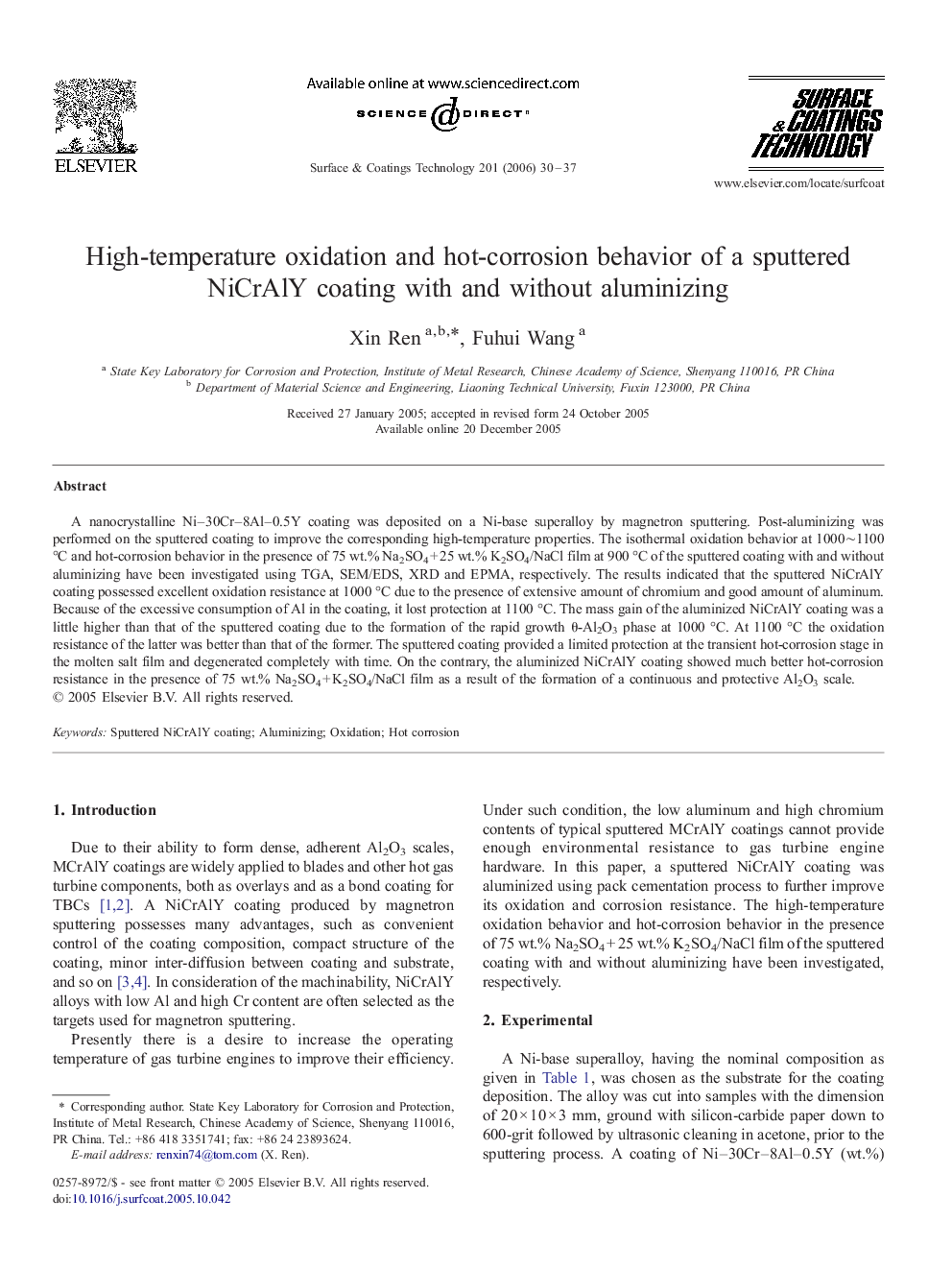| Article ID | Journal | Published Year | Pages | File Type |
|---|---|---|---|---|
| 1663055 | Surface and Coatings Technology | 2006 | 8 Pages |
A nanocrystalline Ni–30Cr–8Al–0.5Y coating was deposited on a Ni-base superalloy by magnetron sputtering. Post-aluminizing was performed on the sputtered coating to improve the corresponding high-temperature properties. The isothermal oxidation behavior at 1000∼1100 °C and hot-corrosion behavior in the presence of 75 wt.% Na2SO4 + 25 wt.% K2SO4/NaCl film at 900 °C of the sputtered coating with and without aluminizing have been investigated using TGA, SEM/EDS, XRD and EPMA, respectively. The results indicated that the sputtered NiCrAlY coating possessed excellent oxidation resistance at 1000 °C due to the presence of extensive amount of chromium and good amount of aluminum. Because of the excessive consumption of Al in the coating, it lost protection at 1100 °C. The mass gain of the aluminized NiCrAlY coating was a little higher than that of the sputtered coating due to the formation of the rapid growth θ-Al2O3 phase at 1000 °C. At 1100 °C the oxidation resistance of the latter was better than that of the former. The sputtered coating provided a limited protection at the transient hot-corrosion stage in the molten salt film and degenerated completely with time. On the contrary, the aluminized NiCrAlY coating showed much better hot-corrosion resistance in the presence of 75 wt.% Na2SO4 + K2SO4/NaCl film as a result of the formation of a continuous and protective Al2O3 scale.
